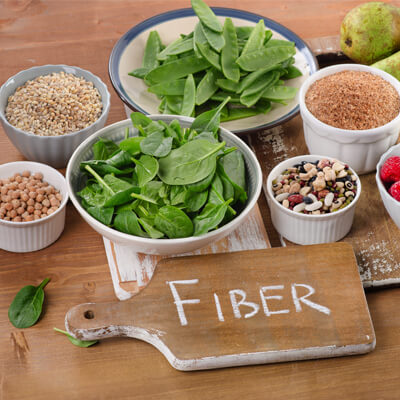Ways to Increase Fiber in Your Diet: Boosting Health with Whole Foods

Fiber is a crucial component of a healthy diet, offering numerous benefits such as improved digestion, weight management, and reduced risk of chronic diseases like heart disease and diabetes. Despite its importance, many people do not consume enough fiber daily. This blog post will guide you through practical and delicious ways to increase your fiber intake for better health and well-being.
Understanding Fiber
Fiber refers to the parts of plant foods that your body can't digest or absorb. Unlike other food components, such as fats, proteins, or carbohydrates, which your body breaks down and absorbs, fiber passes relatively intact through your stomach, small intestine, and colon, and out of your body. There are two types of fiber: soluble, which dissolves in water, and insoluble, which does not dissolve in water.
Benefits of Fiber
Digestive Health: Fiber helps regulate your body's use of sugars, helping to keep hunger and blood sugar in check.
Heart Health: High fiber foods can also help to lower cholesterol levels.
Weight Management: High-fiber foods tend to be more filling than low-fiber foods, so you're likely to eat less and stay satisfied longer.
How to Increase Fiber Intake
Incorporate More Whole Fruits and Vegetables
Opt for whole fruits over juices, which contain less fiber and more sugar.
Snack on raw vegetables instead of chips or crackers.
Add vegetables to every meal - mix them into your pasta, rice dishes, or soups.
Choose Whole Grains over Refined
Switch to whole grain bread, pasta, and cereals instead of their refined counterparts.
Explore other whole grains like quinoa, barley, and farro as sides or meal bases.
Use whole grain flour for baking and cooking.
Add Legumes to Your Diet
Beans, lentils, and peas are excellent sources of fiber.
Incorporate them into salads, soups, and stews.
Try hummus or other bean dips as a snack with whole grain crackers or vegetable sticks.
Snack on Nuts and Seeds
Nuts and seeds are not only high in fiber but also healthy fats and protein.
Sprinkle them over salads, yogurts, or oatmeal.
Keep in mind that nuts and seeds are also high in calories, so moderate your intake if you're watching your weight.
Don’t Forget About Berries
Berries are among the highest-fiber fruits.
Add them to your cereal, yogurt, or enjoy them as a sweet snack.
Making It Work for You
Increasing your fiber intake doesn't have to be complicated or involve drastic dietary changes. Start small by making one change at a time, such as choosing whole grain bread instead of white bread or adding a side salad to your dinner. As you adjust, continue adding more fiber-rich foods into your diet gradually. Remember to increase your water intake as you up your fiber intake to help manage digestion and prevent discomfort.
Conclusion
A high-fiber diet offers numerous health benefits, from improving digestion to reducing the risk of chronic disease. By making simple switches and choosing whole foods over processed, you can easily increase your fiber intake. Start incorporating these tips into your daily meals and snacks to enjoy the wide-ranging health benefits that a fiber-rich diet can provide.